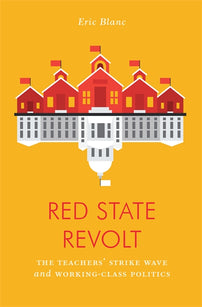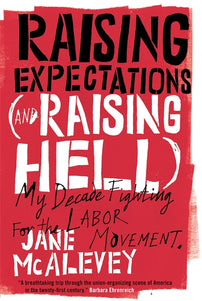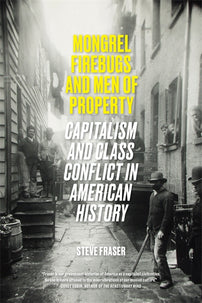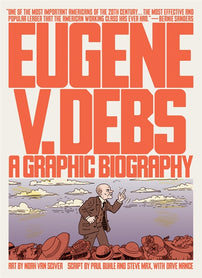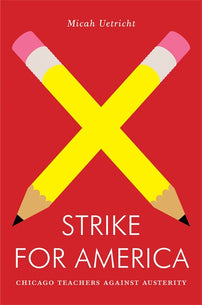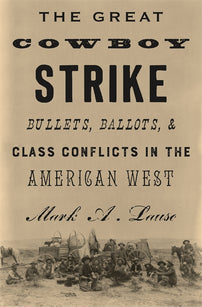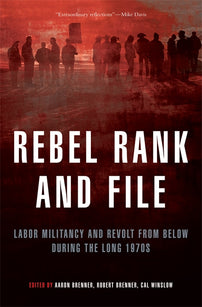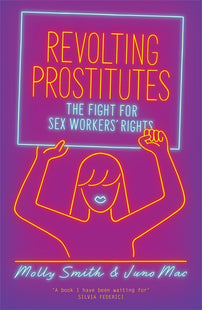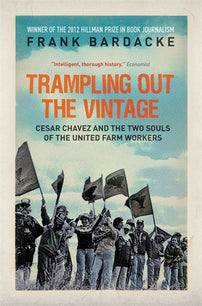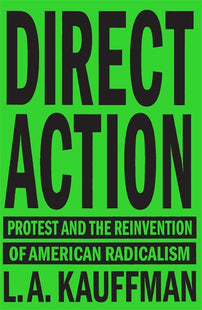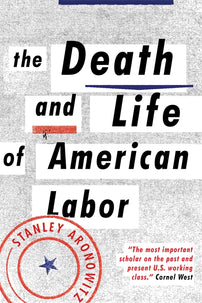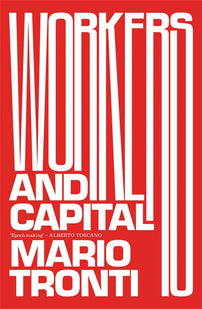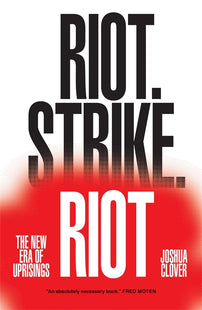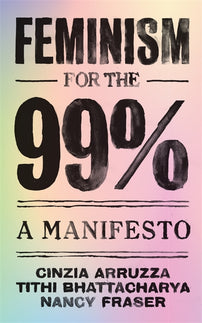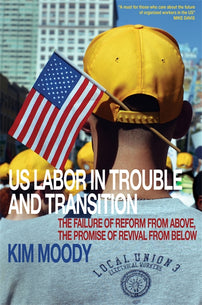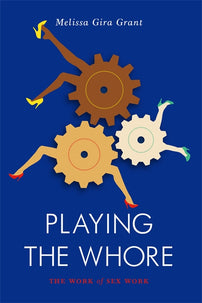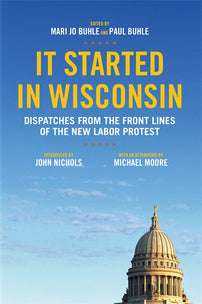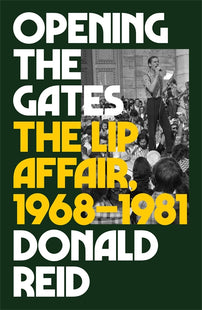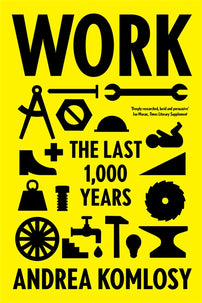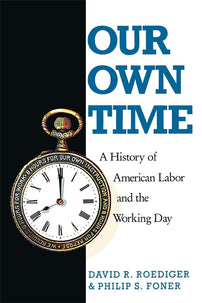US Labor History
A reading list of key titles on the history of labor organizing and class struggle in the US.
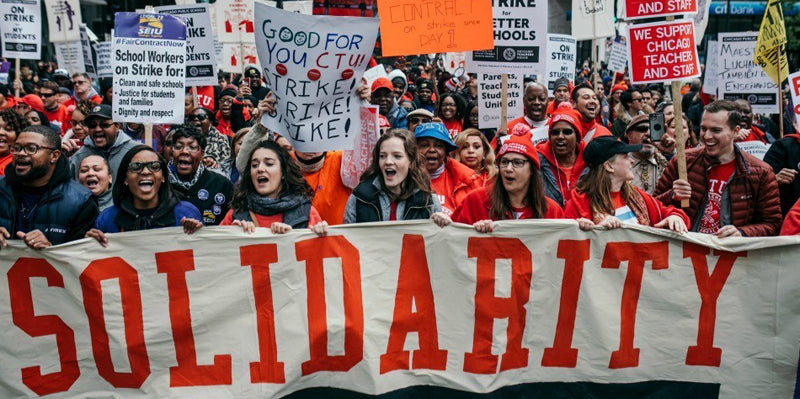
The number of U.S. workers involved in strikes and work stoppages in 2018 was the highest of any year since 1986, and this year continued that trend, with 49,000 General Motors auto workers walking out in the largest private sector strike in more than a decade, the successful Chicago Teachers' Union strike in October, nurses strikes in California, Arizona, Florida and Illinois and hotel workers' strikes across the country.
This increase in labor militancy over the past two years points to a labor movement that is growing in power, and with each strike more workers realize the impact of collective organizing.
Below is a list of key titles exploring the history and theory of labor organizing and the context of class struggle in the U.S.
[book-strip index="1" style="buy"]Thirteen months after Trump allegedly captured the allegiance of “the white working class,” a strike wave—the first in over four decades—rocked the United States. Inspired by the wildcat victory in West Virginia, teachers in Oklahoma, Arizona, and across the country walked off their jobs and shut down their schools to demand better pay for educators, more funding for students, and an end to years of austerity.
[book-strip index="2" style="buy"]Raising Expectations (and Raising Hell) argues that labor can be revived, but only if the movement acknowledges its mistakes and fully commits to deep organizing, participatory education, militancy, and an approach to workers and their communities that more resembles the campaigns of the 1930s—in short, social movement unionism that involves raising workers’ expectations (while raising hell).
[book-strip index="3" style="buy"]In this collection of essays, Steve Fraser, the preeminent historian of American capitalism, sets the record straight, rewriting the arc of the American saga with class conflict center stage and mounting a serious challenge to the consoling fantasy of American exceptionalism. In language that is dynamic and compelling, he demonstrates that class is a fundamental feature of American political life and provides essential intellectual tools for a shrewd reading of American history.
[book-strip index="4" style="buy"]Dynamic and beloved American radical, labor leader, and socialist Eugene Victor Debs led the Socialist Party to federal and state office across the United States by the 1920s. Imprisoned for speaking out against World War I, Debs ran for president from prison on the Socialist Party ticket, receiving over 1 million votes. Debs’s life is a story of labor battles in industrializing America, of a fighting socialist politics grown directly out of the Midwest heartland, and of a distinctly American vision of socialism.
[book-strip index="5" style="buy"]The Chicago Teachers Union strike was the most important domestic labor struggle so far this century—and perhaps for the last forty years—and the strongest challenge to the conservative agenda for restructuring education, which advocates for more charter schools and tying teacher salaries to standardized testing, among other changes. The teachers took on the bipartisan, free market school reform agenda that is currently exacerbating inequality in education and waging war on teachers' livelihoods. In the age of austerity, when the public sector is under attack, Chicago teachers fought back—and won.
[book-strip index="6" style="buy"]In the pantheon of American icons, the cowboy embodies the traits of “rugged individualism,” independent, solitary, and stoical. In reality, cowboys were grossly exploited and underpaid seasonal workers, who responded to the abuses of their employers in a series of militant strikes.
[book-strip index="7" style="buy"]Often considered irredeemably conservative, the US working class actually has a rich history of revolt. Rebel Rank and File uncovers the hidden story of insurgency from below against employers and union bureaucrats in the late 1960s and 1970s. Workers targeted much of their activity at union leaders, forming caucuses to fight for more democratic and combative unions that would forcefully resist the mounting offensive from employers that appeared at the end of the postwar economic boom. It was a remarkable era in the history of US class struggle, one rich in lessons for today's labor movement.
[book-strip index="8" style="buy"]In Revolting Prostitutes, sex workers Juno Mac and Molly Smith bring a fresh perspective to questions that have long been contentious. Speaking from a growing global sex worker rights movement, and situating their argument firmly within wider questions of migration, work, feminism, and resistance to white supremacy, they make clear that anyone committed to working towards justice and freedom should be in support of the sex worker rights movement.
[book-strip index="9" style="buy"]Trampling Out the Vintage is the authoritative and award-winning account of the rise and fall of the United Farm Workers and its most famous and controversial leader, Cesar Chavez. Based interviews conducted over many years—with farm workers, organizers, and the opponents and friends of the UFW—the book tells a story of collective action and empowerment rich in evocative detail and stirring human interest. Beginning with the influence of the ideas of Saul Alinsky and Catholic Social Action at the union’s founding, through the UFW’s thrilling triumphs in the California fields, the drama concludes with the debilitating internal struggles that effectively crippled the union.
[book-strip index="10" style="buy"]This deeply researched account, twenty-five years in the making, traces the evolution of disruptive protest since the Sixties to tell a larger story about the reshaping of the American left. Kauffman, a longtime grassroots organizer, examines how movements from ACT UP to Occupy Wall Street to Black Lives Matter have used disruptive tactics to catalyze change despite long odds.
[book-strip index="11" style="buy"]Stanley Aronowitz brings a historian’s understanding of American workers’ struggles in taking the long view of the labor movement. In a survey of current initiatives, strikes, organizations, and allies, Aronowitz analyzes the possibilities of labor’s rebirth, and sets out a program for a new, broad, radical workers’ movement.
[book-strip index="12" style="buy"]Workers and Capital is universally recognised as the most important work produced by operaismo, a current of political thought emerging in the 1960s that revolutionised the institutional and extra-parliamentary Left in Italy and beyond. In the decade after its first publication in 1966, the debates over Workers and Capital produced new methods of analysis and a new vocabulary for thousands of militants, helping to inform the new forms of workplace, youth, and community struggle.
[book-strip index="13" style="buy"]From early wage demands to recent social justice campaigns pursued through occupations and blockades, Clover connects these protests to the upheavals of a sclerotic economy in a state of moral collapse. Historical events such as the global economic crisis of 1973 and the decline of organized labor, viewed from the perspective of vast social transformations, are the proper context for understanding these eruptions of discontent. As social unrest against an unsustainable order continues to grow, this valuable history will help guide future antagonists in their struggles toward a revolutionary horizon.
[book-strip index="14" style="buy"]Unaffordable housing, poverty wages, inadequate healthcare, border policing, climate change—these are not what you ordinarily hear feminists talking about. But aren’t they the biggest issues for the vast majority of women around the globe?
[book-strip index="15" style="buy"]US Labor in Trouble and Transition tells the story of union decline in America and of the split in the labor movement it led to, following the dismal tale of union mergers and management partnerships that accompanied the retreat from militancy since the 1980s. Looking to the future, Moody shows how the rise of immigrant labor and its efforts at self-organization can re-energize the unions from below. US Labor in Trouble and Transition is a major intervention in the ongoing debate within the US labor movement.
[book-strip index="16" style="buy"]In Playing the Whore, journalist Melissa Gira Grant argues for an overhaul in the way we think about sex work. Based on ten years of writing and reporting on the sex trade, and grounded in her experience as an organizer, advocate, and former sex worker, Playing the Whore dismantles pervasive myths about sex work, criticizes both conditions within the sex industry and its criminalization, and argues that separating sex work from the "legitimate" economy only harms those who perform sexual labor.
It Started in Wisconsin includes eyewitness reports by striking teachers, students, and others (such as Wisconsin-born musician Tom Morello), as well as essays explaining Wisconsin’s progressive legacy by acclaimed historians. The book lays bare the national corporate campaign that crafted Wisconsin’s anti-union legislation and similar laws across the country, and it conveys the infectious esprit de corps that pervaded the protests with original pictures and comics.
[book-strip index="18" style="buy"]In 1973, faced with massive layoffs, workers at the legendary Lip watch firm in Besançon, France, occupied their factory to demand that no one lose their job. They seized watches and watch parts, assembled and sold watches, and paid their own salaries. Their actions recaptured the ideals of May 1968, when 11 million workers had gone on strike to demand greater autonomy and to overturn the status quo. Educated by ’68, the men and women at the Besançon factory formed committees to control every aspect of what became a national struggle.
[book-strip index="19" style="buy"]In this important intervention, Andrea Komlosy demonstrates that popular understandings of work have varied radically in different ages and countries. Looking at labour history around the globe from the thirteenth to the twenty-first centuries, Komlosy sheds light on both discursive concepts as well as the concrete coexistence of multiple forms of labour—paid and unpaid, free and unfree.
[book-strip index="20" style="buy"]Our Own Time retells the story of American labor by focusing on the politics of time and the movements for a shorter working day. It argues that the length of the working day has been the central issue for the American labor movement during its most vigorous periods of activity, uniting workers along lines of craft, gender and ethnicity. The authors hold that the workweek is likely again to take on increased significance as workers face the choice between a society based on free time and one based on alienated work and unemployment.
[book-strip index="21" style="buy"]With extraordinary attention to the viewpoints of rank-and-file workers, Moody chronicles the major, but largely unreported, efforts of labor’s grassroots to find its way out of the crisis. In case studies of auto, steel, meatpacking and trucking, he traces the rise of “anti-concession” movements and in other case studies describes the formidable obstacles to the “organization of the unorganized” in the service sector. A detailed analysis of the Rainbow Coalition’s potential to unite labor with other progressive groups follows, together with a pathbreaking consideration of the possibilities of a new “labor internationalism.”
